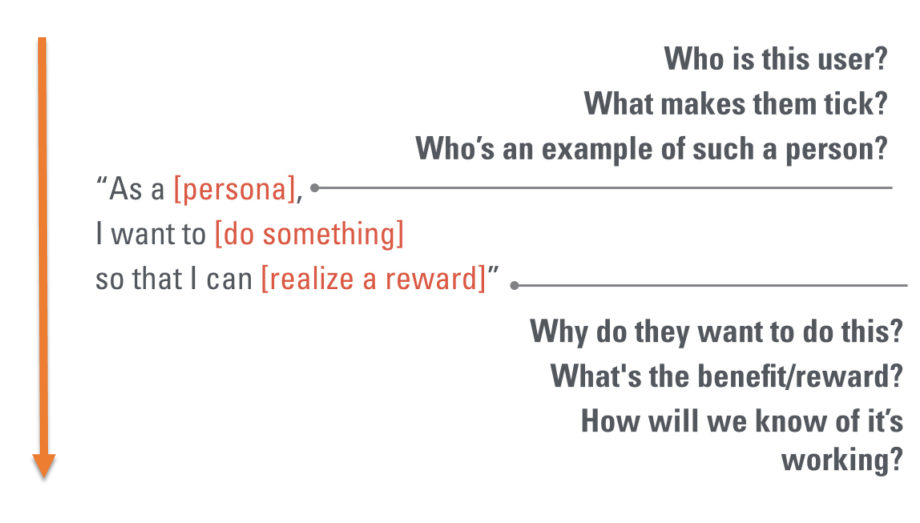Agile User Story
What is a User Story in Scrum?
A User Story is a brief, simple description of a feature or functionality from the perspective of the end-user. It focuses on the value or benefit the user gains. User stories help teams understand what needs to be built, why users need it, and for whom.

Pattern of User Story:
User stories typically follow a simple template:
As a [user], I want [feature] so that [benefit]
This format helps developers understand the purpose and the expected outcome clearly.
How to write User stories?
To Write user stories, a template is used which helps to ensure that you do not accidentally start writing technical tasks.
User Story template -
User stories would capture only the essential elements of a requirement -
- Who is it for?
- What it expects from the system?
- Why is it important?

Who - The user should be a human who interacts with the system?
- Be as specific as possible
- The development team is NOT a user
What - The behavior of the system should be written as an action.
- Usually unique for each User Story
- The"system"is implied and does not get written in the story
Why - The benefit should be a real-world result that is non-functional or external to the system.
- Many stories may share the same benefit statement.
- The benefit may be for other users or customers, not just for the user in the story.
Characteristics of a User Story (INVEST)
A helpful acronym to remember good stories: INVEST
- I – Independent: Each story can be worked on separately.
- N – Negotiable: It's a reminder for conversation, not a contract.
- V – Valuable: It should add value to the customer.
- E – Estimable: The team should be able to estimate the effort.
- S – Small: It should be doable in a single sprint.
- T – Testable: You can verify if it’s complete.
